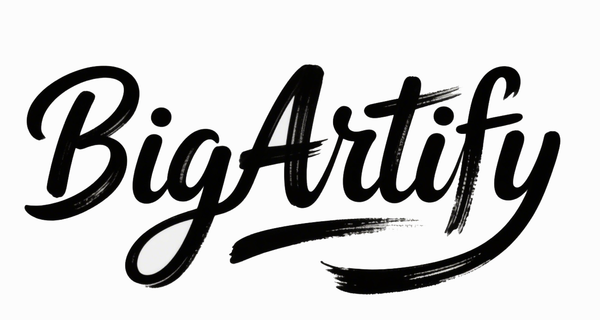Why Edvard Munch’s The Scream May Be the First Modern Painting: A Haunting Vision of Modern Anxiety
Edvard Munch’s The Scream (1893) is one of the most iconic images in modern art history, often hailed as a profound symbol of 20th-century existential fear, alienation, and psychological turmoil. Painted amidst Munch’s own personal anxieties and inspired by a vivid sensory experience, The Scream embodies the emotional and subjective lens of modernity that distinguished it from the artistic traditions that came before. While some art historians point to later works like Picasso’s Les Demoiselles d’Avignon (1907) as the watershed moment for modern art, The Scream arguably marks the birth of modern painting by expressing an inner reality beyond formal representation.

The Scream’s Origins: An Expression of Inner Horror and Nature’s Terror
Created in 1893, The Scream traces back to a panic attack Munch suffered while walking outside Kristiania (now Oslo). He described how “the sun was setting and the clouds turned as red as blood. I sensed a scream passing through nature.” This moment of overwhelming anxiety was translated into the painting’s swirling vibrant bands of red, orange, and blue sky, and the central, androgynous figure’s agonized visage. The figure’s twisted body, sometimes likened to a flickering flame, captures a physical and mental state of terror and vulnerability.
By blending the external landscape with Munch’s internal anguish, The Scream represents a radical departure from realism or classical landscape painting. The jagged lines and unnerving colors distort the scene to convey psychological intensity rather than factual accuracy. This subjective emotionalism is a hallmark of Symbolism, yet the painting’s rawness and immediacy foreshadow Expressionism and later modernist explorations of the psyche.
Why The Scream Is Often Called the First Modern Painting
Unlike Renaissance masterpieces that idealize serenity and control, Munch’s work confronts the chaos and alienation inherent in modern life. It externalizes feelings of anxiety, sadness, and despair that would come to define much of 20th-century culture. The painting’s abstraction of form and color serves as a visual language for modern alienation and psychological fragmentation, setting the tone for what modern art would become.
Moreover, The Scream dissolves the boundary between subject and environment, depicting the scream not just as a personal outcry but as something echoing through nature itself—the terrifying atmosphere in which modern humans live. This integration of inner and outer worlds anticipates the emotional directness and formal experimentation that characterize modernist painting.
While Picasso’s Les Demoiselles d’Avignon (1907) broke new ground by reconfiguring anatomy and space, The Scream predates this and breaks ground on an emotional and conceptual level, making it a vital prototype for modern art’s focus on individual perception and emotional truth.

The Painting’s Legacy and Cultural Impact
The Scream exists in multiple versions, including two painted in 1893 and 1895, as well as pastels and prints, some of which have been targets of high-profile thefts. Its central figure, modeled possibly after an Inca mummy or simply an embodiment of primal fear, has become one of the most reproduced images in art history, symbolizing human anxiety universally.
Exhibited in prestigious institutions like the National Museum of Norway, The Scream continues to inspire artists and audiences. Its presence in MoMA’s exhibitions and scholarly discussions underline its ongoing relevance.
Additional Resources and Interpretations
-
The Britannica entry on The Scream offers a detailed historical and artistic background.
-
A rich interpretative analysis tracing Munch’s symbolic and expressionist approach is available in Artnews’s feature.
-
The Smarthistory video and article provide approachable art historical commentary with visual breakdowns.
Frequently Asked Questions (FAQ)
Q1: Why is The Scream considered a modern painting?
The Scream is viewed as one of the first modern paintings due to its emphasis on subjective emotion, psychological existentialism, and the use of abstraction to convey inner turmoil—themes that broke away from traditional realistic or idealized art.
Q2: What inspired Edvard Munch to paint The Scream?
Munch’s personal experience of a panic attack during a walk amid a surreal sunset inspired the painting. He described sensing an “infinite scream passing through nature,” which he visually translated into the swirling colors and anguished figure.
Q3: How many versions of The Scream exist?
Munch created several versions: two paintings (1893 and 1895), two pastels, and multiple lithograph prints. Some have been stolen and recovered, highlighting the artwork’s high cultural and monetary value.
Q4: What art movements is The Scream associated with?
While rooted in Symbolism, The Scream profoundly influenced Expressionism and laid groundwork for various modernist explorations of individual psychological states.
Q5: Where can I see The Scream today?
Major versions are housed in institutions like the National Museum of Norway and occasionally appear in prominent exhibitions, including those at the Museum of Modern Art (MoMA) in New York.
Q6: How did The Scream influence later artists?
Its raw emotional representation and formal experimentation inspired Expressionist artists and modern painters, influencing 20th-century art’s focus on personal and emotional truth.
Edvard Munch’s The Scream remains a haunting and unforgettable symbol of human anxiety at the dawn of modernity. By visualizing despair in an expressionistic and innovative way, it stands as a pioneering work that opened new paths for modern art’s exploration of emotion, identity, and perception.
